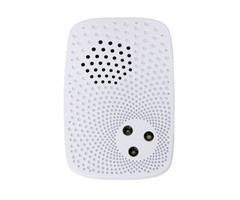Setting Off Your Sirens is Important for System Testing
Posted By Michael GorisHi DIYers! As you may know, testing your equipment is an integral part of owning an alarm system. But your testing should go beyond just making sure your sensors work properly and that your panel communicates with the central station. Testing your sirens and sounders is also important.

When you activate your monitoring service with Alarm Grid, there will undoubtedly be some testing involved. Our team will be checking to see if your system sends out signals successfully. This is a vital part of receiving a certificate of alarm so that you can get a discount on your homeowner's insurance. And as a DIY installer, you will be checking to make sure that all your sensors work properly. This includes things like walking through a room to see if your motion sensor notices your presence and opening and closing your doors and windows to check that your contact sensors perform correctly. But what about your sirens?
Look, we know that testing your sirens isn't the most fun. They're loud. They scare pets. They make children cry. With that in mind, it's no surprise that some users decide to disconnect their sirens during system testing. This is perfectly fine in theory. After all, your system will still be able to communicate out, and its sensors will still work properly. You might think that you can just add your sirens later after testing. However, we're here to tell you that testing your sirens and having them activate is a step that every alarm system owner should take.
But why should you test your sirens? The reason actually goes beyond the obvious answer of making sure the sounders and strobes work. It's also smart to have a good idea of exactly what your system's sirens sound like. That way if an emergency does occur, you will have a better chance of knowing immediately what is going on. Keep in mind that not all sirens are created equal. They can differ in terms of volume and pitch. By taking the time to listen to your siren, you are more likely to be ready if there ever is an emergency.
Another thing that many users don't realize is that there are usually different noises for different types of alarms. For example, an activated smoke detector will typically produce a temporal 3 sound (three consecutive tones, then a pause, repeated), while an activated carbon monoxide detector will typically produce a temporal 4 sound (four consecutive tones, plus a pause, repeated). There are also continuous tone alarms (one long, steady tone) that are commonly used for burglary and intrusion alarms. Knowing what each alarm sounds like can potentially save your life in an emergency. For example, how you respond to a break-in won't necessarily be how you respond to a fire!
At Alarm Grid, we want all our customers to be prepared when alarms occur. This includes knowing what sounds your equipment makes. If you're a monitored customer, we are happy to help you however we can. The best way to reach us is to email support@alarmgrid.com with your questions. You may also call us at (888) 818-7728 during our normal business hours of 9am to 8pm EST M-F. We look forward to helping you get the very most out of all your alarm system equipment. That includes your sirens, sounders and strobes!



